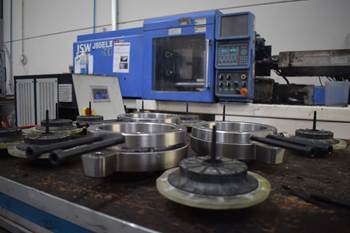Search Results
Showing 261 – 270 of 1112 results
Composite materials are engineered combinations of two or more distinct materials, merging their individual properties to create a new material with enhanced characteristics. Typically composed of a reinforcing phase (like fibers or particles) embedded within a matrix (often a polymer, metal, or ceramic), composites leverage the strengths of each component to achieve superior strength, stiffness, lightness, or other desirable attributes. Their versatility extends across industries, from aerospace and automotive to construction and sports equipment, where their tailored design and exceptional properties offer solutions for high-performance applications.
Recycling in composites manufacturing is an evolving endeavor aimed at addressing sustainability challenges. Unlike traditional materials, composites often pose recycling complexities due to their multi-component nature. However, innovative techniques are emerging to tackle this issue. Methods like pyrolysis, mechanical recycling, and chemical processes are being developed to efficiently recover valuable components from composite waste, such as fibers or matrix materials.
The company is launching B&M Longworth’s patented DEECOM waste recycling process at JEC World, used in combination with Cygnet Texkimp’s fiber-handling technologies.
European project replaces complex-shaped metal structure in aircraft cooling system with injection molded thermoplastic composite material for improved sustainability.
Carbon Fiber Recycling, Inc. uses proprietary continuous thermolysis equipment to remove epoxy resins and any sizings from carbon fiber waste.
Novel thermoplastic composite materials, a bio-based and biodegradable nanofiber and a technology that chemically recycles PA66 polymers enable more circular, lightweight and connective EVs.
Japan-based Fuji Design’s recycling technology involves controlled, cyclical heating and cooling for higher-performance fiber reclamation. New partnership with Teijin Ltd. aims to scale up and commercialize the technology.
Through Swancor’s recyclable thermosetting resin technologies, the recyclable resin and composites can be reused, assisting Siemens Gamesa in moving towards its goal of providing fully recyclable wind turbines in Taiwan.
Materi’act to propose materials including low CO2 carbon fibers, bio-based and carbon-capturing compounds and more, with up to 85% CO2 reduction.
A new 50,000-square-foot manufacturing facility based in Denver, Colo., will enable ten times the production capacity of composite materials processing, recycling.
As companies strive to meet zero-emissions goals, evaluating a product’s carbon footprint is vital. Life cycle assessment (LCA) is one tool composites industry OEMs and Tier suppliers are using to move toward sustainability targets.
Vartega’s Andrew Maxey discusses carbon fiber waste, carbon fiber recovery, and the still-growing market for recovered fibers.










